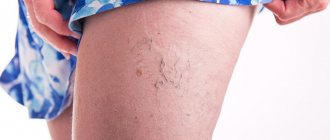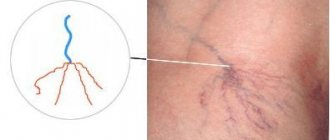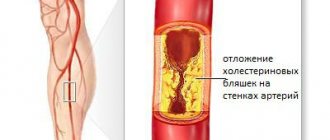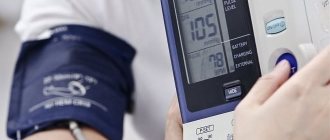Types of pathology
Depending on the pathogenesis, three types of the disease are distinguished:
- Fatty pancreatic necrosis, in which the activity of the lipase enzyme is increased, due to which the fatty tissue of the pancreas is destroyed.
- The hemorrhagic form is due to the high activity of elastase, which impedes normal microcirculation, provokes swelling and thrombus formation. The disease is accompanied by internal hemorrhages in the internal organs and retroperitoneal space.
- Mixed form, in which the activity of lipase and elastase is at the same level.
Prevention
To prevent pancreatic necrosis, you need to follow some simple recommendations:
- Limit the amount and frequency of alcohol consumption.
- Avoid junk food – fast food, processed foods, soda, and minimize the consumption of fatty and fried foods.
- Do not take medications without a doctor’s prescription, especially do not abuse them.
- Try to create a diet based on natural products, try to practice split meals in small portions.
- Treat cholelithiasis in a timely manner.
- At the first symptoms indicating problems with the pancreas, consult a doctor immediately.
- Follow the principles of a healthy lifestyle.
Symptoms and stages
Acute pancreatic necrosis is determined by the following signs:
- severe pain in the left hypochondrium, which can radiate to the side, shoulder, back or heart area;
- vomiting with blood and bile, which does not bring relief;
- severe intoxication;
- respiratory dysfunction;
- signs of renal and liver failure;
- unstable mental state: increased excitability, lethargy, inappropriate reactions.
Depending on the extent of the damage, three stages of the disease are distinguished:
- Focal - necrosis has a point nature, most of the gland retains functionality. The focal form is treated with conservative methods.
- Subtotal form - about 60–70% of the gland is affected. In such cases, doctors can resort to both conservative methods and surgical intervention.
- Total pancreatic necrosis means 100% damage to the organ; urgent surgical intervention is indicated.
List of sources
- Dibirov M.D., Yuanov A.A. Pancreatic necrosis. Diagnostic and treatment protocol. Educational and methodological manual. Moscow, 2012, p. 366
- Ermolov A.S., Ivanov P.A., Blagovestnov D.A. and others. Diagnosis and treatment of acute pancreatitis. M., 2013, “VIDR”, p. 382
- Mitryakov P.S. Modern methods of treating patients with pancreatic necrosis // International Journal of Experimental Education. – 2021. – No. 9-2. – P. 221-224;
- Acute pancreatitis (Diagnosis and treatment protocols) / S.F. Bagnenko [and others]; St. Petersburg Research Institute of Emergency Medicine named after. I.I. Dzhanelidze. - St. Petersburg, 2004.
- Savelyev V.S., Filimonov M.I., Burnevich S.Z. Pancreatic necrosis. MIA, 2008, p. 259
- Sakhno V.D., Mainulov A.M., Vlasova N.V., Bochkareva I.V. Necrotizing pancreatitis, treatment protocols. Annals of Surgical Hepatology, 2005, vol. 10, no. 1, p. 107 – 112
How is diagnostics carried out?
To diagnose the disease, doctors resort to the following methods:
- blood and urine test for alpha-amylase enzyme;
- Ultrasound of the pancreas, during which you can see swelling and affected areas;
- computed tomography, during which you can examine the heterogeneity of pancreatic tissue;
- Laparoscopy is a minimally invasive procedure during which it is possible to detect organ swelling, record the inflammatory process and differentiate the type of pathology.
Life forecast
Hemorrhagic pancreatic necrosis has an extremely unfavorable prognosis. Even with timely initiation of treatment, the death of the patient is observed in half of the cases. If you refuse therapy, this figure approaches 100%.
Causes of death
The main causes of sudden, sudden death in pancreatic necrosis:
- septic complications that impair the functions of all organs;
- infectious-toxic shock, due to which infection is considered a negative factor in the course of the pathology;
- irreversible change in the structure of the pancreas;
- total tissue necrosis;
- reactive changes in affected tissues.
In the situations described above, death occurs instantly or after a few days. It is extremely rare for a patient to survive more than 2 weeks.
Surgery
The operation involves removing dead tissue and cleaning the abdominal cavity. Intervention is indicated if the patient has a total or subtotal infection of an infectious nature, a purulent abscess, false cysts, or peritonitis.
If the disease proceeds without infection, surgery is avoided.
Surgeons prefer to resort to minimally invasive techniques, since open abdominal surgery has a high mortality rate and is often accompanied by secondary infection.
Complications
In 20% of cases, acute pancreatic necrosis is accompanied by a state of collapse or coma; severe mental disorders occur in every 4 patients. The formation of a pancreatic-retroperitoneal fistula promotes the penetration of pancreatic juice, dead tissue and hemorrhagic exudate into the abdominal cavity. This causes suppuration of the peritoneum and the development of peritonitis.
In 20% of cases, acute pancreatic necrosis is accompanied by mental disorders.
Disability
The first disability group is assigned to patients who have undergone removal of the pancreas, suffering from internal bleeding and severe digestive disorders. In the absence of complications, there is a possibility of receiving the third group. The formation of external fistulas and moderate digestive disorders are indications for assignment to the second disability group.
Diet
Pancreatitis requires a diet, and pancreatic necrosis of the pancreas requires an even more strict diet.
If surgery is indicated, then a few days before and a few days after it, the patient is transferred to clinical nutrition: intravenous or tube feeding. This is necessary to reduce enzyme activity as much as possible. At the same time, patients receive food enriched with proteins, vitamins and antioxidants.
After recovery, the patient will have to go on a strict diet forever. Alcohol, fatty, fried, smoked, spicy, sweet, canned food, too cold or too hot food are prohibited.
Treatment with folk remedies
When a patient's pancreatic necrosis worsens, he experiences severe pain. Folk remedies that are used in parallel with the main treatment can help improve the condition a little. But, before practicing such methods, it is necessary to visit a doctor, establish a diagnosis and begin practicing the correct treatment regimen.
- The fruits of Japanese Sophora - a decoction is prepared from them. A spoonful of raw materials should be filled with 1 tbsp. boiling water and leave for 5 hours. Drink warm before every meal. The course of treatment is 10 days.
- Blueberry berries and leaves - a decoction is prepared from them by pouring boiling water over dried or fresh raw materials and boiling for 5 minutes. (2 tbsp. raw materials per 250 ml of water). Drink instead of tea.
- Immortelle herb - a decoction helps relieve pain and inflammation. To prepare the decoction, take 1 tbsp. l. dry herbs and a glass of water, cook for 5 minutes. Strain the resulting broth and drink throughout the day.
- Oat decoction helps relieve irritation and restore organ cells. To prepare the product, you need to soak the grains and wait a few days for them to sprout. Sprouted grains need to be dried and ground. Pour the mixture with cold water (1 tablespoon of oats per 1 glass of water) and leave for about half an hour. You need to drink 2 glasses of this product a day.
- Lemon – helps reduce pain. To do this, boil the lemon in water for 5 minutes, then squeeze the juice out of it and mix with raw yolk. Drink the product on an empty stomach and do not eat for three hours after it. Take it five times a day, once every three days. The course of treatment lasts several months.
- Licorice root - to prepare it you need to take 1 tbsp. l. chopped dry licorice root, the same amount of dandelion and burdock leaves. Pour the mixture with 2 cups of boiling water, drink the infusion hot, half a glass 3-4 times a day.
There are also special herbal mixtures used to treat the pancreas. But it is important to take into account that they bring benefits to the body if such preparations are taken regularly and according to the scheme approved by the doctor. Under no circumstances should you practice self-medication with folk remedies for such a terrible diagnosis as pancreatic necrosis.
Popular questions about pancreatic necrosis
What kind of disease is pancreatic necrosis?
Pancreatic necrosis is a serious, life-threatening complication of acute pancreatitis, in which pancreatic tissue partially or completely dies. The condition is accompanied by severe intoxication and can lead to multiple organ failure and death.
How does pancreatic necrosis begin?
Pancreatic necrosis usually appears several hours after drinking alcohol or overeating. The first symptoms of the disease are pain in the left hypochondrium, radiating to the side, shoulder, arm, back or heart area. Acute pain is accompanied by severe intoxication, intestinal upset, and vomiting.
How long can you live after surgery for pancreatic necrosis?
Mortality during surgical intervention for pancreatic necrosis is about 50% of cases. If the patient undergoes the operation safely, he has a chance to live a full life, however, following a strict diet.
Pathogenesis
The basis of the pathogenesis of pancreatic necrosis is a failure in the mechanism of internal protection of the pancreas from the influence of pancreatic enzymes that destroy it. If a person drinks alcohol heavily and constantly overeats, external secretion increases significantly, the ducts of the gland are stretched, and the outflow of pancreatic juices is disrupted.
Necrosis of the pancreas develops against the background of pancreatitis - an inflammatory process of the pancreas, in which the death of part or the entire organ often occurs.
The pancreas is an organ important for the normal functioning of the body. Its main functions are the production of the main enzymes involved in digestion, as well as the regulation of blood sugar due to the production of the hormones insulin and glucagon . Accordingly, dysfunction of this organ leads to serious disturbances in the general condition of the body.
When a person feels hungry, juices and enzymes are transported through the connecting duct into the small intestine, which ensures enzymatic processing of food. Pancreatic fluid acts on the acidic environment of gastric juice, neutralizing it. In the intestines, digestive enzymes break down and process substances.
The pancreas produces the main digestive enzymes:
- lipase – breaks down fats;
- amylase – converts starch into sugar;
- chymotrypsin , trypsin - are involved in the breakdown of proteins;
- glucagon , insulin , polypeptide , etc.
If in healthy people the enzymes produced by the pancreas are active directly in the digestive tract, then in patients with damage to the ducts of the gland, the enzymes directly affect the pancreas. Against the background of increased pressure inside the ducts, edema of the parenchyma develops, the acini of the pancreas are destroyed, and proteolytic enzymes are activated prematurely. As a result, the gland “poisons” itself. Due to the activation of lipase, necrosis of fat cells occurs, under the influence of elastase, blood vessels are destroyed, and activated enzymes, as well as breakdown products, end up in the bloodstream. In this case, there is a toxic effect on all tissues and organs. First of all, damage occurs to the liver, kidneys, heart, and brain.
With pancreatic necrosis, three stages of tissue death are determined:
- Toxemic - toxins of bacterial origin appear in the blood, the gland actively produces enzymes.
- Development of an abscess - a purulent inflammatory process of tissues and organs that surround the pancreas develops.
- Purulent changes in tissues - if purulent sepsis develops, immediate surgical intervention is required, as this condition is life-threatening.





